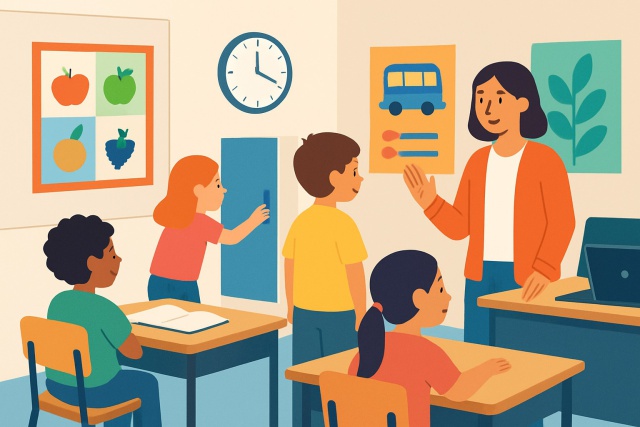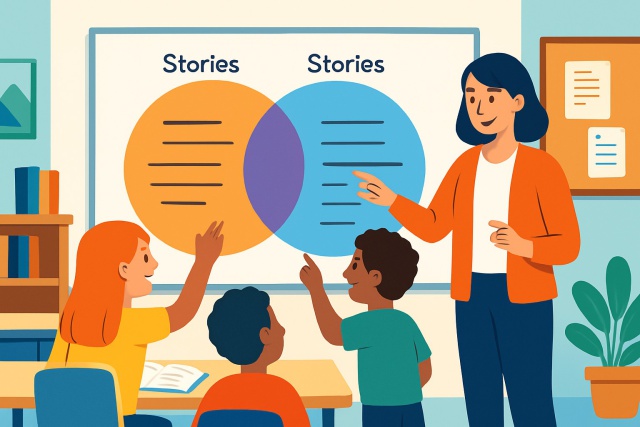Why We Love Volunteers in Elementary Classrooms

Volunteers often play a quietly essential but sometimes underappreciated role in elementary classrooms. Their contributions go far beyond simple chores. They elevate the quality of instruction and provide much-needed one-on-one support. They also help spark a livelier and more engaging learning environment. This article shines a light on why volunteers really count and shares down-to-earth tips for harnessing their enthusiasm and unique skills. This frees up classroom teachers to do what they do best teach.
What Truly Sets Volunteers Apart in Elementary Classrooms
Volunteers bring tremendous value to elementary classrooms by pitching in with personalized support and sharing a variety of skills that perfectly complement what teachers already offer. Their involvement helps foster a warm, welcoming atmosphere where students receive that much-needed extra attention and guidance.
- Volunteers really step up student engagement by pitching in with hands-on help and plenty of encouragement.
- Having more adults around per student means teachers can offer that all-important personalized attention and quicker support when it’s needed most.
- They chip in with tailored instruction, working alongside students who learn at different paces and in their own unique ways.
- Volunteers bring a refreshing mix of role models into the room, which naturally helps broaden students’ horizons.
- By pitching in with classroom management, volunteers free up teachers to do what they do best—focus on teaching.
Tips for Attracting and Keeping the Right Volunteers with Tried-and-True Ideas
Attracting the right volunteers starts with clear, upfront communication about the classroom’s needs and the specific roles volunteers will step into. It usually pays off to lean on school communities and local networks to find individuals who are genuinely motivated and ready to pitch in. Equally important is creating a warm, welcoming environment where volunteers feel truly appreciated and supported.
Clearly outline volunteer roles and set transparent expectations so that skills truly match what’s needed.
Reach out to school families, local groups and community organizations to steadily grow your volunteer base.
Make those connections count by adding a personal touch — think phone calls or customized emails that show you genuinely care.
Offer thorough onboarding including orientation sessions and handy resources to help volunteers feel confident and ready to jump in.
Keep the momentum going by regularly showing appreciation whether it’s thank-you events, certificates or well-deserved public recognition to keep volunteers motivated and feeling valued.
Getting the Most Out of Volunteers Through Clear Training and Guidelines That Actually Stick
Successful volunteer programs usually find the sweet spot between being efficient and clear. When volunteers get the lowdown on classroom routines and safety protocols or teaching techniques, they tend to walk away feeling more confident and ready to tackle their tasks. Handing out written guidelines and giving regular feedback works wonders in keeping their efforts sharp and on point. Plus, it saves teachers from having to babysit every little detail.
- Hand volunteers a handy handbook or checklist that spells out key tasks and classroom rules to eliminate guesswork.
- Run brief orientation sessions that clearly explain expectations, daily routines and safety protocols. A little upfront clarity can save headaches later.
- Share examples of volunteer-led activities that worked well to spark confidence and get creative juices flowing.
- Lay out confidentiality policies in plain language to protect student privacy and build trust.
- Set up regular feedback loops so volunteers feel supported and can pitch ideas to improve things.
Innovative Volunteer Roles That Break the Mold of Traditional Support
Volunteers often step up in ways that far exceed the usual classroom support. When you tap into their unique skills, it not only empowers them but also gives students helpful boosts that might catch you off guard. Whether it’s lending a hand with technology or mentoring students tackling a new language, these roles bring extra layers to the learning experience and lighten the load for teachers who are juggling time-consuming or specialized tasks
- Help students navigate tablets or computers, ensuring those educational apps cooperate and run without a hitch.
- Act as reading buddies for ESL students, offering gentle support to practice language skills and build their confidence one page at a time.
- Dive into science or art projects by sharing your know-how and lending a helpful hand whenever needed.
- Pitch in with organizing classroom libraries or managing supplies to create a cozy, welcoming learning space.
- Join the fun during celebrations and events, adding to the buzz and helping boost everyone’s spirits and enjoyment.
Practical Solutions for Everyday Volunteer Challenges
Volunteer programs often hit a few bumps like irregular attendance or fuzzy role definitions or just not having enough hands on deck. Facing these challenges head-on by laying out clear expectations and having a few backup plans up your sleeve while keeping the communication lines wide open goes a long way toward keeping things on an even keel.
Offer flexible scheduling that fits around volunteers’ busy lives—this touch can seriously boost their reliability.
Have backup plans ready like a trusty crew of on-call volunteers so any last-minute dropouts don’t throw a wrench in the works.
Lay out task priorities and limits in plain English to help volunteers focus on what really matters without feeling swamped.
Keep the lines of communication wide open and encourage volunteers to voice concerns and tackle challenges as a team. This makes all the difference.
Provide a variety of participation options whether it’s short-term gigs or project-based roles so people can chip in no matter their schedule.
Practical Tips for Spotting and Supporting Volunteers Who Really Make a Difference
Recognition plays a surprisingly key part in forming a truly successful volunteer program. When you show genuine appreciation it lifts volunteer morale and strengthens their commitment. It also helps craft a positive can-do atmosphere that everyone wants to be part of.
- Send personalized thank-you notes that highlight specific contributions and show just how much they’ve helped. It’s amazing what a heartfelt note can do.
- Shine a spotlight on volunteers in newsletters or on social media because everyone loves a little well-deserved recognition and it really boosts morale.
- Offer small tokens or certificates of appreciation that volunteers can hold onto with pride. These little keepsakes often mean more than you’d think.
- Invite volunteers to special classroom events or celebrations to help them truly feel like part of the community. It’s all about those shared moments.
- Create opportunities for skill development and leadership roles to encourage deeper involvement and personal growth. This approach benefits everyone and helps people level up.
Handy Tips for Planning and Scheduling Volunteer Activities That Actually Work
Careful planning is the secret sauce that turns volunteer hours into genuine educational progress. It’s all about zeroing in on engaging activities that deliver the biggest bang for the buck, while fitting neatly into the typical session length and what volunteers can realistically juggle. Try to set schedules that line up with volunteers’ availability but still keep a rhythm that students can count on.
| Volunteer Activity | Recommended Duration | Ideal Frequency | Required Preparation | Expected Impact on Student Learning |
|---|---|---|---|---|
| Reading One-on-One | 20-30 minutes | 2-3 times weekly | Pick books that really click with the child's age and interests | Gives a nice boost to literacy, vocabulary, and most importantly, confidence |
| Small Group Math Support | 30-45 minutes | Weekly | Have some targeted exercises ready to go | Reinforces key concepts and plugs those pesky learning gaps like a charm |
| Technology Assistance | 30 minutes | Biweekly | Make sure devices and apps are all set up beforehand | Helps kids sharpen digital skills while keeping their curiosity alive and kicking |
| Classroom Organization | 15-30 minutes | Monthly | Gather materials and plan ahead so things run smoothly | Creates a supportive learning space where students can really thrive |
| Event and Celebration Support | 1-3 hours | As needed | Coordinate supplies and timing to keep everything on track | Boosts community spirit and fires up student enthusiasm in all the right ways |
Final Thoughts About Why Volunteers Play Such an Important Role in Elementary Classrooms
When you really think about it, volunteers are the unsung heroes in elementary classrooms. They bring that extra spark of energy and warmth that teachers often rely on but don’t always get the credit for. It’s a bit like having a secret weapon in your corner—you might not always see them, but their impact is unmistakable. From lending a helping hand during chaotic craft projects to offering one-on-one attention that can make all the difference, volunteers create an atmosphere where kids feel supported and valued. In my experience, their presence shifts the whole classroom vibe in subtle but powerful ways, making learning a little smoother and a lot more enjoyable. Honestly, the role volunteers play is priceless, and it’s worth celebrating every single time they step through that classroom door.
Volunteers really are the heartbeat of the bustling world of elementary education. Their diverse contributions don’t just fill gaps; they add rich layers to the learning experience and bolster teachers when things get hectic. They also help weave a close-knit supportive school community. When schools genuinely recognize and involve volunteers thoughtfully, it often pays off in spades with better student success and overall well-being.






